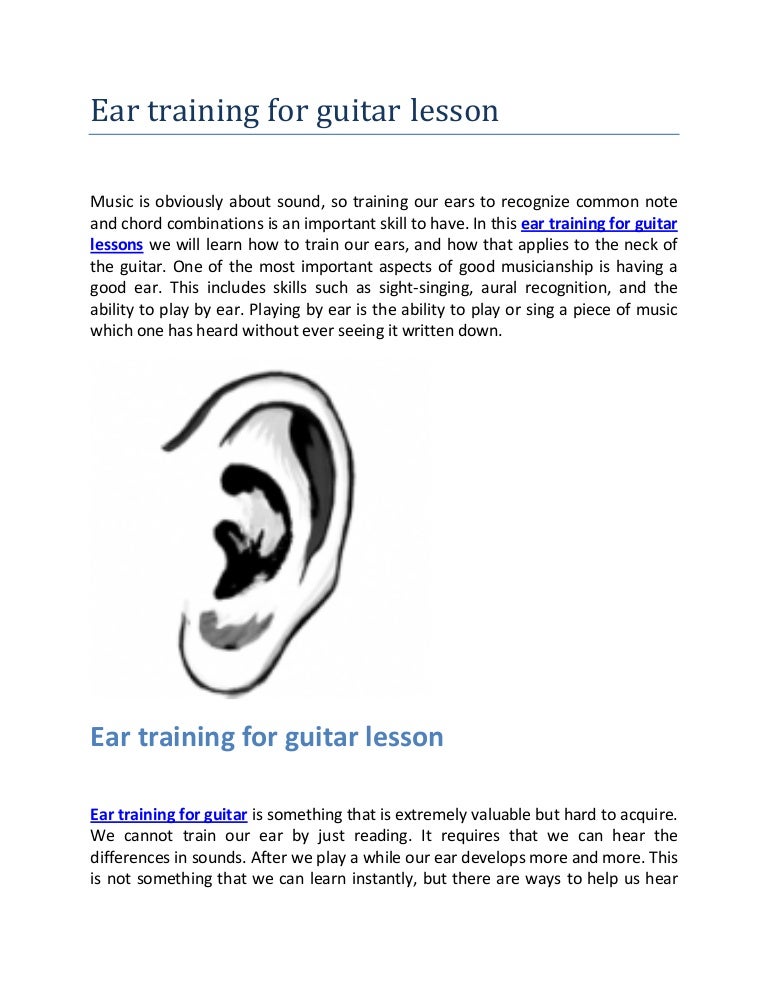



A flimsy headphone amplifier to drive them and a lead to plug you into the PA will only get you so far. You won’t be happy with your IEMs if they’re cheap. On that note, what do these damn things cost? There are a couple of brands that I can think of that choose to employ microphones in the IEM package to feed in ambient sound via a wearable pack. The latter seems to work well – but ambient ports, as they break the seal, could mess with the IEM sound. While we’re talking IEM jargon, you may encounter ambient ports, filters and valves, which are all ways to bleed outside sound into your mix via a physical, pluggable hole in the earpiece, or just to improve the hearing experience. You’ll hear of variants such as ‘balanced armature’ and ‘dynamic’ drivers. Well, different types are utilized in IEMs, all of them very accurate at producing sound.
#EAR PRACTICE GUITAR PRO#
Well done for the gamification of this test btw, I would push the cursor even further, gamifying stuffs like this can be great.Sennheiser IE 500 Pro in-ear monitoring headphones (Image credit: Sennheiser ) This quizz lead to interesting questions to me.

But once in the 1% range, there’s some I could definitely pinpoint as the answers but some that relied mostly on “gut feeling”. I found it interesting that there’s an overall progression, I didn’t tried them multiple times, only once each, but I’ll maybe do them once a day for few days and post my results as answers of this post if there’s any change.ĭoes this method can really improve my earing or is it just my ear adapting during the test but without “longterm benefit” ? Does this earing improvment can be really used in real life situations ? Am I earing better or just developing strategies that fits the purpose of this quizz ? For instance, at first, it was like when I tune a guitar, and so spotting lower second pitch was way easier than spotting higher pitch, then I refined a bit that strategy, using my hand and creating a “lower note expectation” for the second note, trying to ear if the note eared meet the expected note in my head. Then back to the sine using the melodic mode: I first took the test with default settings, getting a 8% than, after reading the comments, I got caught by the game high score aspect and decided to test once all waveform and the two mode. That was really fun, even tho a bit ear breaking even at low volume, I found the progression really interesting. I’m 31yo, musician (guitar), trained, and few earing issues as most gigging musicians, using average headphones, firefox browser.
#EAR PRACTICE GUITAR FREE#
I hope you find this useful and feel free to provide feedback in the comments. Try different tones for each of the first and second note to hear subtle differences in pitch when the notes have a diffrent tones. You can also fix the first note to be a high, medium or low note or have the first note change for each test. Options allow you to play the notes melodically, one after the other, or harmonically where the first note continues playing while the second note plays. See how small an interval you can differentiate. As you get answers right, the notes will get closer together until they are almost identical. Pick if the second note is higher or lower than the first. Two notes will be played that are 100% of a semitone apart. The intonation ear trainer is designed to help develop your ear for intonation, or how well you can pick if a note is in tune.


 0 kommentar(er)
0 kommentar(er)
